There is no straightforward overland route from Bishkek in Kyrgyzstan to Tashkent in Uzbekistan. You have to go the long way ‘round – either all the way back down to Osh in the south and cross from there or the way we went, by train via Kazakhstan. It’s about six hours on an old Russian train with no aircon to Lugovoy in Kazakhstan. Here you have to wait for seven hours until a connecting train arrives at 1.30am. Then, it’s another twelve hours on the train to Tashkent.
Lugovoy feels so remote – a Kazakh country town, with cows and old cars, and a backdrop of the beautiful snow-capped Tian Shan mountains. It’s a long way from anywhere. Since we were in a new country, we had to go through our standard arrival procedure – get local currency, new mobile SIM cards, coffee and food. It could have been terrible but we ended up having a great evening. One tiny shop let us store our packs there, another changed money, a little cafe outside the station made us coffee and vegetarian food and later on the station manager invited us for coffee in his office. Eventually, we were the only people waiting at the station. It was a great feeling waiting alone on the platform, in the middle of the night, with a couple of friendly old dogs for company. I could feel where I was standing on the map of the world.
In preparation for Uzbekistan, I’d been reading a fabulous book called ‘A Carpet Ride to Khiva’ by Christopher Aslan Alexander. He’s my new hero. He tells a story in the book about how when Russia was setting up their railway system they sent a couple of fellows to London to check out the trains there. On arrival at Vauxhall Station they mistakenly thought Vauxhall was the word for station. Consequently, every Russian train station is called ‘Vokzal’. I have no idea if this story is true but I was delighted when I saw it on the train station in Tashkent. Indeed, I’ve noticed it on every station since.

We were so exhausted when we got to Tashkent (aka Toshkent) that all we wanted to do was sleep. By all accounts, it’s a very nice city but in our state of mind it was too big and too hot. The highlight of our stay was the very friendly ‘Irish’ pub around the corner that didn’t have any Guinness. We had a big sleep for a couple of days and then ran away to Samarkand. Sorry Tashkent! Maybe next time.
I’ve always wanted to go to Samarkand (Marakanda). It’s one of the oldest inhabited cities in Central Asia, dating back to the Palaeolithic era and with recorded history from the 8th century BC. It was completely destroyed by Genghis Khan in 1220 but rebuilt.
“Samarkand, the most beautiful face the Earth has ever turned towards the sun.” (Rubaiyaat of Omar Khayyam)
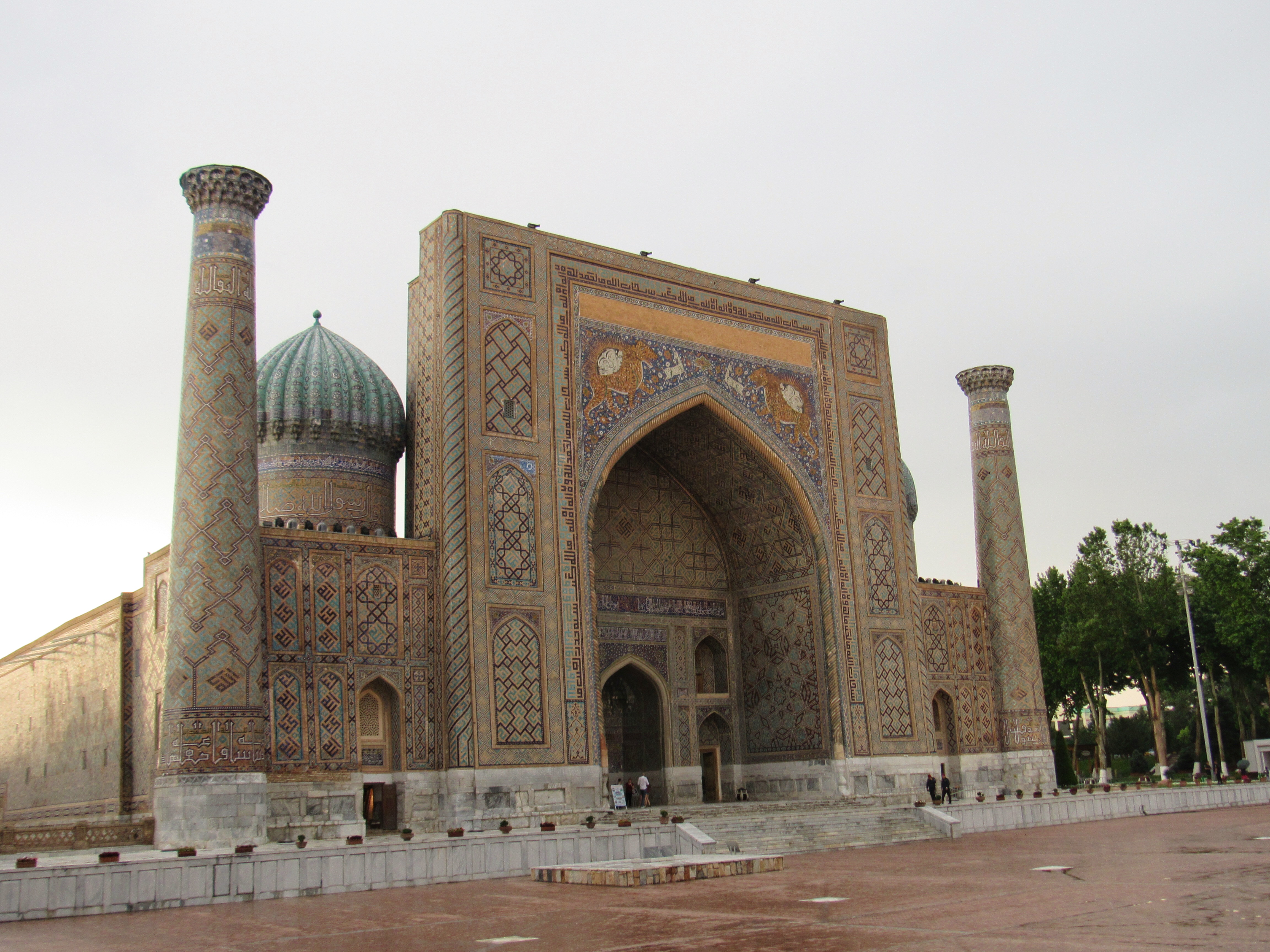
Its hard to find words big or impressive enough to describe Samarkand. It’s like a grand and stunningly beautiful open-air museum. The Islamic buildings (mosques, madrasas, minarets, mausoleums) are huge soaring edifices of architectural wonder with intricate details.

We stayed in a comfortable modern apartment at the bottom end of University Boulevard, a wide and majestic avenue shaded by huge old twisted mulberry trees. It leads up, in a series of processional paths and steps, for approximately 4km – through the university grounds, with students and teachers strolling and talking earnestly, all the way past the Gur-E Amir, the Registan, the Bibi-Khanym mosque, and the ancient bustling bazaar to the Shah-i-Zinda necropolis. Along the way it passes by giant statues, bubbling fountains and through leafy green parks. Right now, the weather is perfect. A cool and green oasis in the desert. I fantasised about living here for a while and maybe teaching at the university.

The ‘big three’ historical sites in Uzbekistan are Samarkand, Bukhara and Khiva. Although I’ve always wanted to go to Samarkand, I’d never even heard of the other two. Whereas Samarkand is a city of grandeur and splendour, Bukhara is a more authentic cultural immersion. Nobody seems to know exactly how old Bukhara really is but it’s at least a few thousand years. Wandering through the narrow, dusty streets lined with mud brick houses and ornate carved doors is a trip back in time. Everywhere you look is an exquisite mosque, a dome, a gate, a caravanserai.
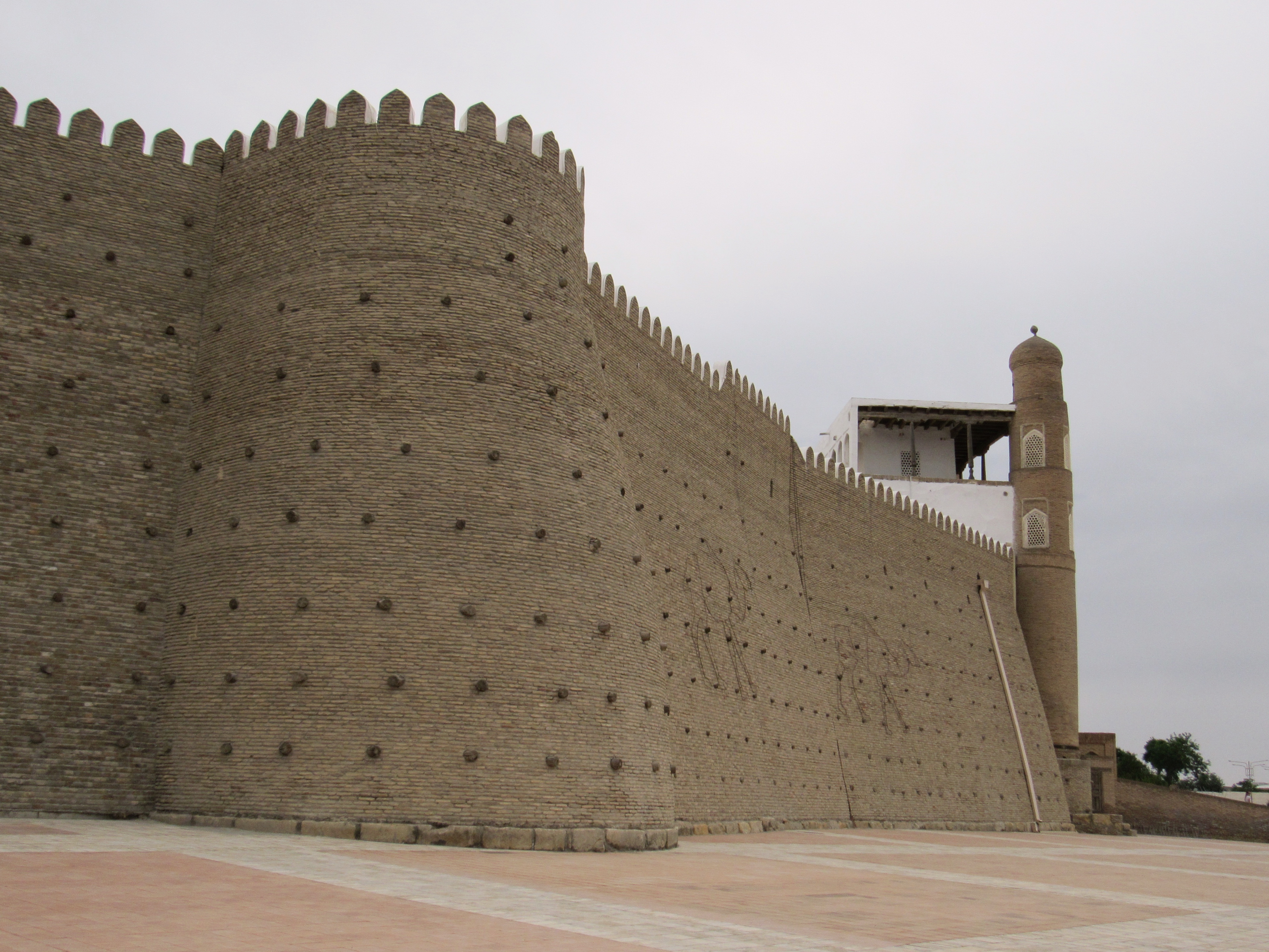
Bukhara is dry, dusty and hotter than hell. The middle of the day is uninhabitable and everyone goes home to sleep in the shade until it cools down again in the evening. The centre of Bukhara is the ancient pool of Liyabi-hauz surrounded by shade and eating houses. It comes alive at night with lights, fountains and music. It feels very exotic looking down from a restaurant balcony while sipping local wine.

The majority of people in both Bukhara and Samarkand are Tajik (Persian) and Bukhara feels very much as I imagine ancient Persia – the courtyards, day beds with draped curtains, clothing, fruit and nuts, mint tea, gorgeous carpets and decorations. Every possible surface is decorated with carvings, paintings, coloured tiles and rich tapestries. The women wear colourful clothing and many have a full set of gold teeth.

It all feels very luxurious, refined and poetic in Bukhara. The apartment we stayed in added to this feeling. It was like a luxury mini-palace. The hospitality from our host Sharif was extraordinary. Every morning there was a delicious vegetarian feast provided for breakfast that was enough food to last us all day. We were invited to his home to drink tea and again to have dinner one night with him and his beautiful wife Rano. Sitting in the courtyard under the stars and making dinner conversation via Google Translate is a memory I’ll treasure forever.


Bukhara has a long history of being a spiritual centre. It was renowned for religious tolerance and diversity pre-Islam. Those monotheistic cults are so self-righteous. The call to prayer is not often heard anywhere in Uzbekistan. I believe it was banned for a decade or so but is apparently just starting to come back. I only heard it a couple of times and I missed it.

The Bukharans are historically a settled people, rather than nomadic, and have been engaged in agriculture, crafts and trade for millennia. There are little stalls and shops everywhere and the bazaars are alive with entreaties to ‘look, just look madam’, the sounds of haggling and the most wondrous array of beautiful things to buy – carpets, jewellery, silks and all manner of things. They are hassly salespeople though and it’s not a very relaxing experience.
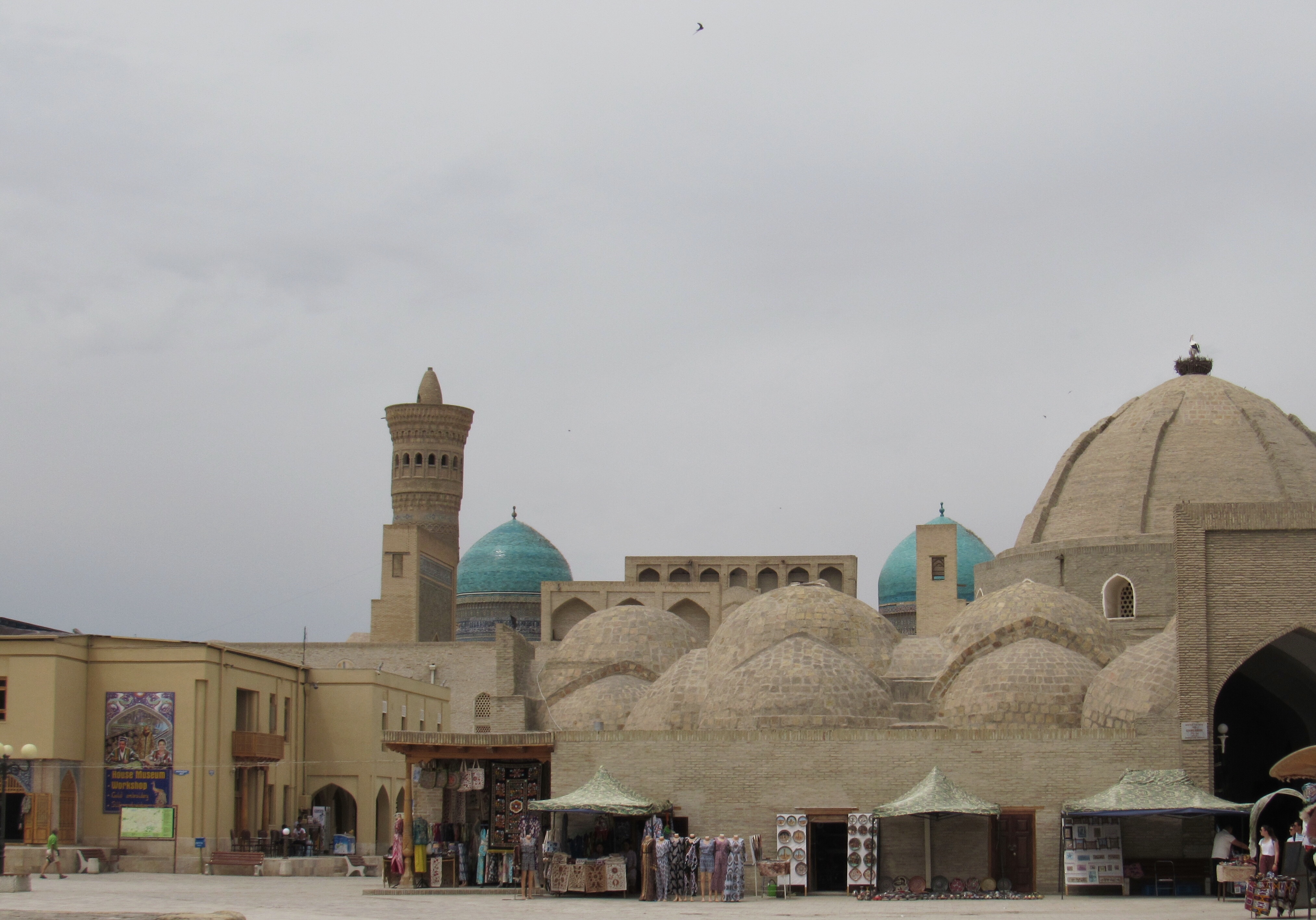
The wonders we saw and experienced in Bukhara could fill an entire book but one of the standout places for me was the Sitorai Mokhi-Khosa Palace where a long line of the Emirs of Bukhara resided. Their palaces were repeatedly destroyed and the current version was built by the last Emir in the early 1900s. Although it’s not that old, the architecture is astounding. It houses a museum of cultural artefacts, including a fascinating collection of clothing and textiles. I finally discovered the story behind the traditional curled up pointy-toed shoes. It seems they’re shaped like this to reduce the surface area that touches the ground. This takes the concept of ‘stepping lightly on the earth’ to a whole new level.

We had one of those extremely annoying self-appointed guides who said a guide is included in the entry price and it’s his job to show us around. The subtext being that it’s our job to put up with him. The guide ony talked to JH. This happens all over the world and it annoys me a lot. He started to take notice of me at the harem house when he was describing how the Emir’s four wives would hang out there (embroidering endless suzannis) and I said, ‘they should have just killed him and taken the palace’. He looked positively startled and disappeared soon after.
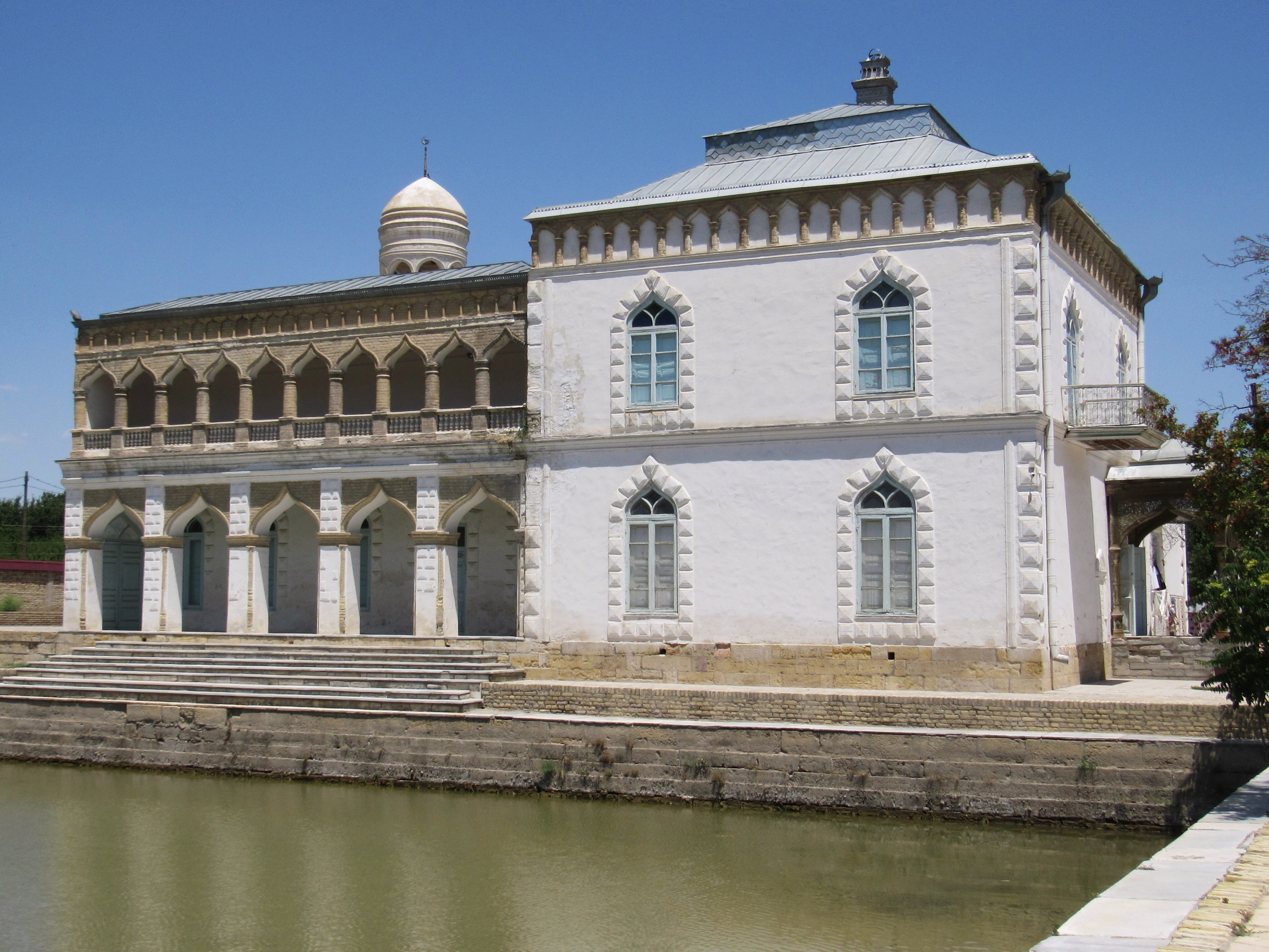
On the train from Bukhara to Khiva, farmland gave way to scrub and then eventually petered out to nothing but desert. Arriving in the early evening, just as the sun was setting, we were transported into a fantasy novel.

The house where my new hero lived in Khiva is now a guesthouse (Meros BnB) and I was so excited to be able to stay there. It’s very old and right near the West Gate inside the Itchan Kala (old city).

Khiva has a brutal past as one of the most important slave trading markets of Central Asia. It is even hotter here than in Bukhara and I can imagine it was a place of nightmares for the victims of slavery, like something out of Game of Thrones. There would have been no escape from here, surrounded on all sides by the unrelenting Karakum and Kyzylkum deserts. There is a traditional saying that you need to carry three things when you travel into the desert – a turban to use as a shroud, a knife to dig your grave and a ring to use as payment to the person who buries you. Sounds like good advice.
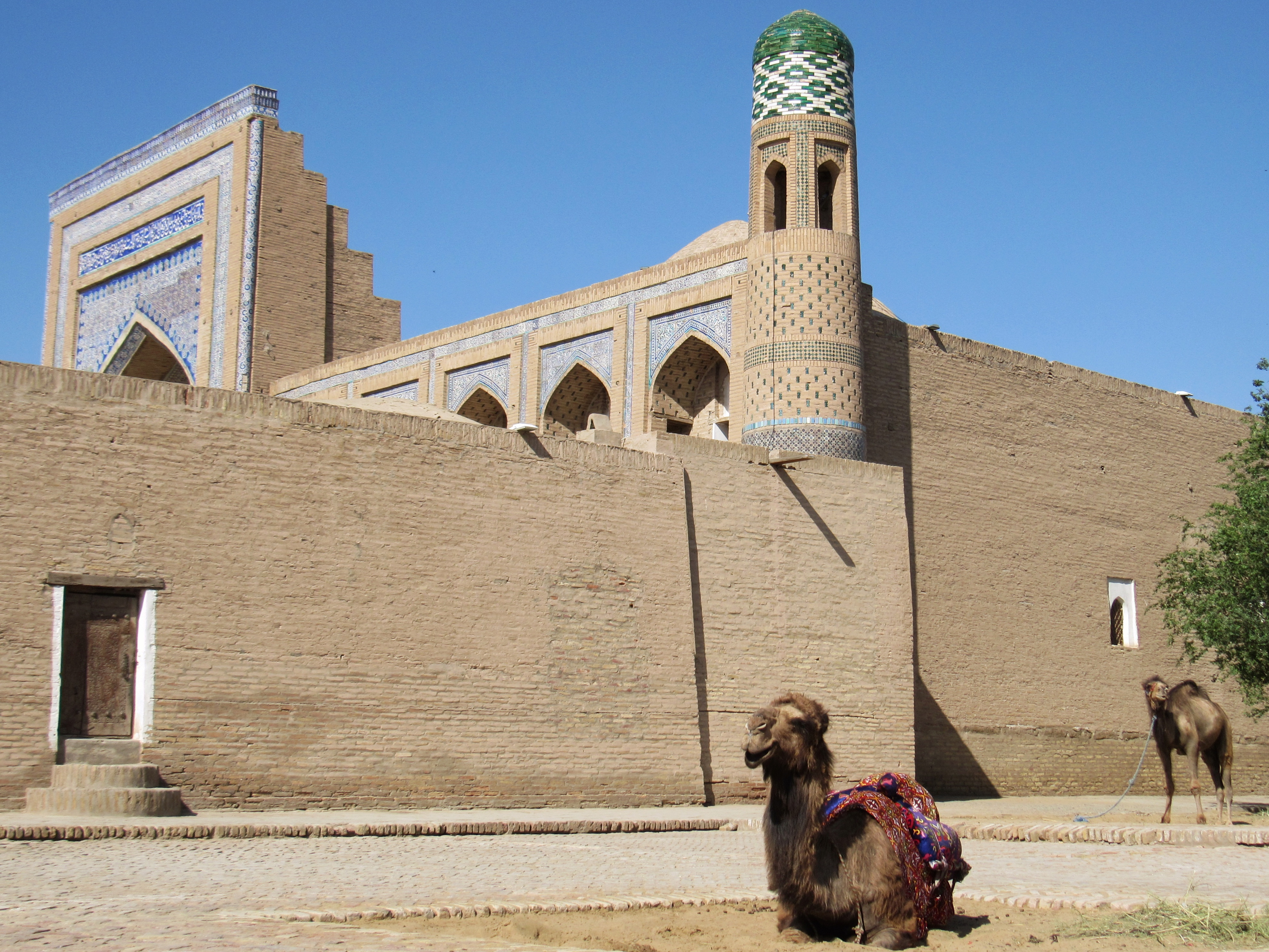
Khiva is the essence of everything I hoped to find on the Silk Road – ancient, exotic, magical. There’s something about an ancient desert city of domes and spires that resonates with my soul. I was mesmerised and in awe watching the sun set over the old city and the minarets bathed in pink and golden light. I count this as one of the most beautiful and special experiences of my life.
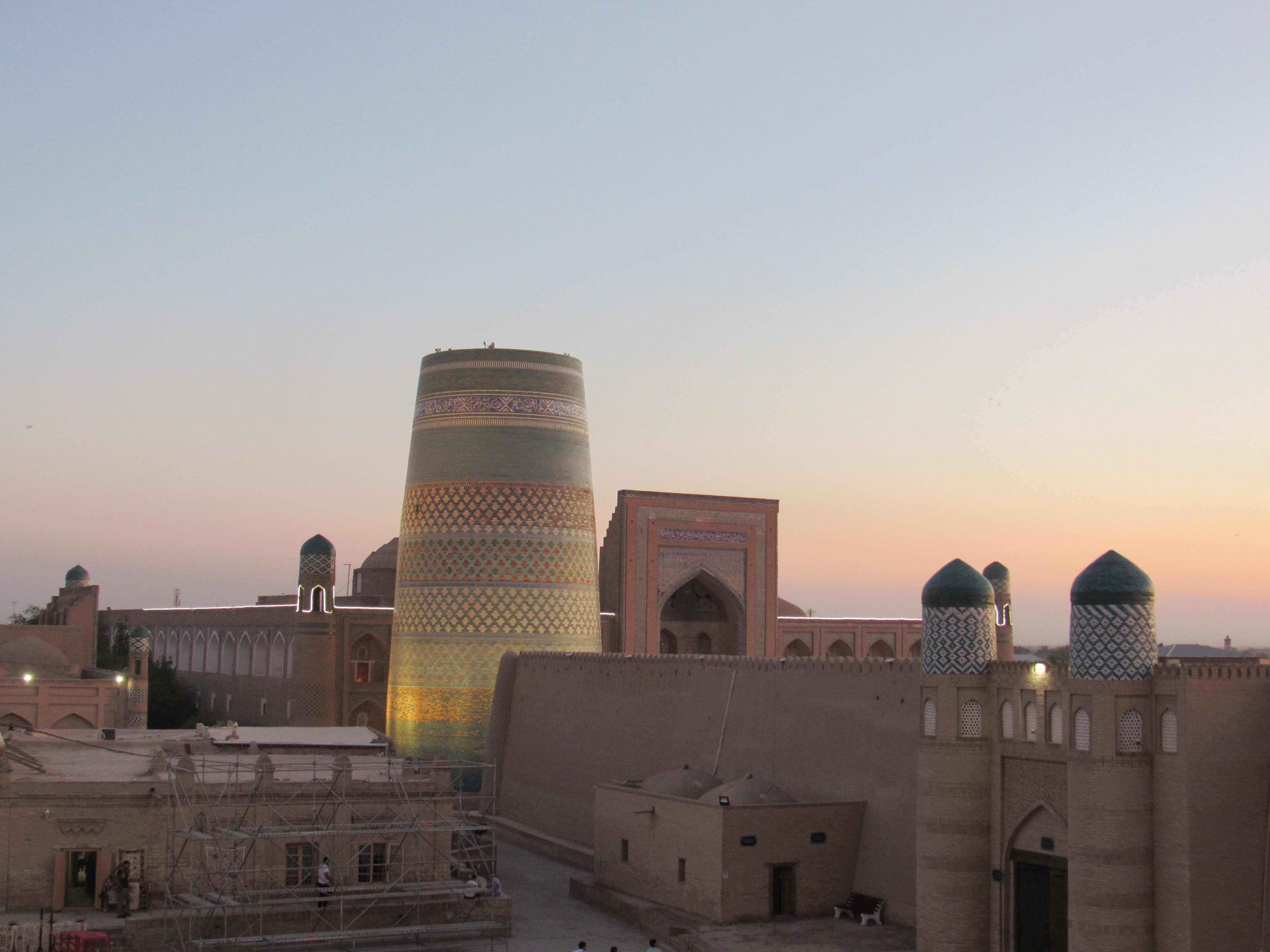

Looks brilliant you guys are so lucky.
Happy travels.
Malp
LikeLike
Thanks Malp 🙂 We’re having a fabulous time
LikeLike
Having seen all your photos Jeanne I was so looking forward to hearing the stories behind them. Loved this what a fantastic adventure!
LikeLike
Thanks Dorte x Uzbekistan is amazing. A great destination for a holiday
LikeLike
Hi love your photos and commentry excellent. I. am drawn to the architecture and the stories that go with such ancient history. I think I will be following in your footstep in the near future as I has always been a dream of mine. It is an interesting way ti go from China. Is it possible to show where you have been on a map some time. This is a journey of a life time I hope it does get too hot. Enjoy enjoy
LikeLike
Thanks Av. It’s a great trip! I’ll try to put a map together x
LikeLike
I had a fresh coffee to read with this latest installment. It is cold now, because I read the whole thing with my mouth open, imagining your descriptions and googling for extra imagery and info….and didn’t touch the coffee.
And I’m glad I forgot it was there, because I would have spat it everywhere when I read this:
‘they should have just killed him and taken the palace’. JS gold. x
LikeLike
Haha glad you appreciated that bit x The history is totally fascinating.
LikeLike
I want to go to the museum city so wondrous….I kept a brochure for last twenty yrs of a Silk Road trip so I am finally enjoying it thanx lovely to read your travels and travails love Helga xx
LikeLike
I highly recommended it Helga. Xxxx
LikeLike
Helga, maybe you and I should do a “two old ladies tour” of Persia! Annabelle.
LikeLiked by 1 person
Jeanne, you have reached the part of your journey that most fascinates me. I have been reading about Persia and the surrounding cultures since childhood and have always longed to see the mysterious and magical sounding Samarkand and Bukhara. Your photography is excellent! I am inspired to get to the Silk Road sometime before I die! (Even if I have to go on one of those poxy package hols!)
LikeLike
I think a poxy package tour would be fine lol. I’m sure you can probably get small group ones x I would if I was you 🙂 thanks for the compliment about my photos 🙏🏽
LikeLiked by 1 person